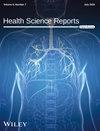Long-Term Effects of the COVID-19 Open Strategy on the Mental Health of Chinese University Students: A Prospective Cohort Study
Abstract
Background
In December 2022, the Chinese government shifted its COVID-19 prevention and control policy to full openness, leading to a widespread pandemic within a short period. This study aimed to examine the trajectories of stress, anxiety, and depressive symptoms among Chinese university students within 1 year after the implementation of the open policy. Additionally, it investigated the influence of sleep quality, psychological resilience, and medical specialization on these psychological trajectories.
Methods
A cohort study was conducted among Chinese university students using stratified sampling. Follow-up assessments were conducted at three time points: T1 (December 2022–January 2023), T2 (May–June 2023), and T3 (December 2023–January 2024). Generalized Estimating Equations were used to estimate mean differences in symptom levels over time and to examine the influence of sleep quality, psychological resilience, and medical specialization on these changes.
Results
At T1, a total of 2,062 university students were recruited. By T3, the follow-up rate was 63.43%, resulting in a final analytical cohort of 1,308 participants. Among them, 769 (58.8%) were female, and 539 (41.2%) were male. The majority (54.7%, n = 716) were between 19 and 22 years old. Stress, anxiety, and depression levels were highest among Chinese university students at the beginning of the open policy and gradually decreased over the following year. Students with poor sleep quality and poor psychological resilience exhibited worsening psychological trajectories, which showed more severe and persistent symptoms. Medical and Nonmedical students consistently exhibited similar psychological trajectories.
Conclusions
Collectively, the present study indicated that the change of COVID-19 prevention and control policy had more serious negative impacts on the mental health of Chinese university students than the epidemic itself. Thus, strengthening psychological treatments and psychosocial interventions for university students would be crucial in the context of a protracted infectious disease epidemic.


 求助内容:
求助内容: 应助结果提醒方式:
应助结果提醒方式:


